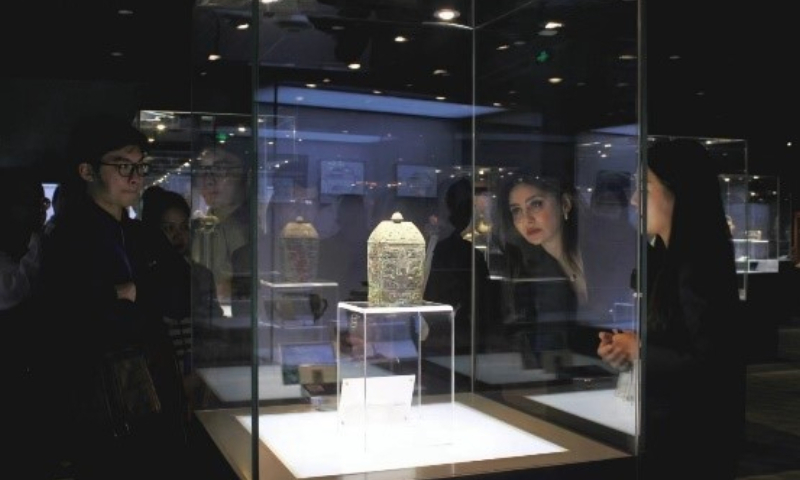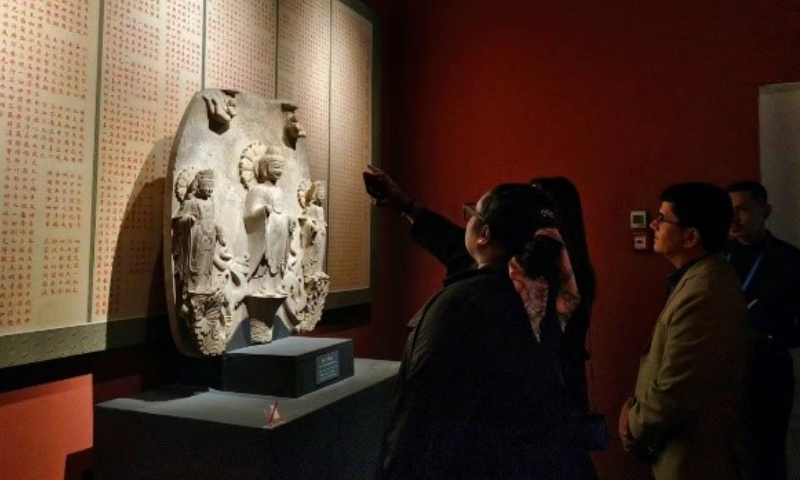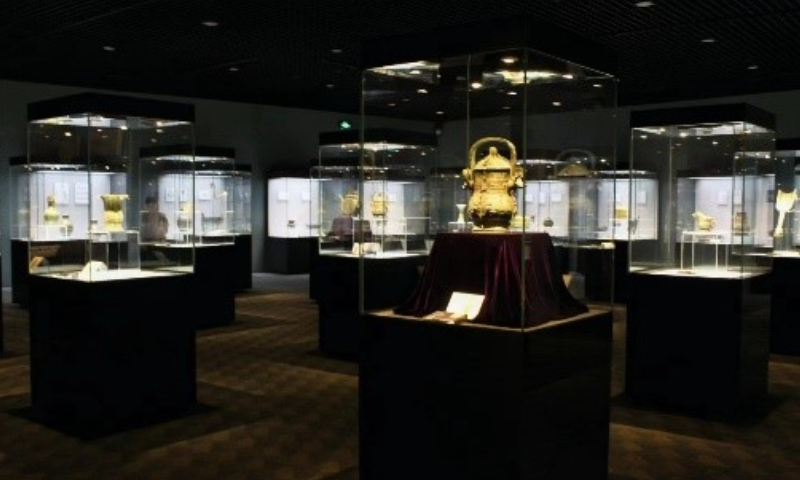
Foreign journalists appreciate Xian Fang Yi, a rectangular wine container from the Shang Dynasty (c.1600BC-1046BC) at the Poly Art Museum in Beijing on Friday. Photo: Qian Jiayin/GT
Cultural exchange is crucial for partner countries in jointly building the Belt and Road Initiative (BRI), representatives of the first Silk Road Global News Awards winners agreed on Friday after they paid a visit to the Poly Art Museum in Beijing, emphasizing that international cooperation cannot be reached without mutual learning among civilizations.
The museum aims to promote the outstanding traditional culture and art of the Chinese nation and to rescue and protect precious Chinese cultural relics lost overseas. During the visit, the guests explored national treasures and experienced the vitality of the millennia-old cultural heritage of the BRI in the museum.
Chinese bronze artifacts dating back over 3,000 years were exhibited there, which are unparalleled in the world, with magnificent and mysterious patterns on them.
"I've been impressed because it's a very big culture and civilization. These artifacts are very old, and cannot be found in Europe," Branko Zujovic, a Serbian journalist from Pecat Weekly, told the Global Times while visiting the museum. Zujovic added that he prefers the Tang Dynasty (618-907) and has great respect for that period of Chinese history, as well as the artifacts.

Foreign journalists appreciate an exhibition of ancient Chinese Buddhist statues at the Poly Art Museum in Beijing on Friday. Photo: Qian Jiayin/GT
Additionally, there were over 40 stone-carved Buddhist statues from the 5th to 8th century, demonstrating the prosperity and connectivity of the ancient Silk Road, as well as the integration of Eastern and Western civilizations.
"Buddha interested me most, as well as the development of Buddhism in China," Executive Director of the Center for the Promotion of the Belt and Road Initiative of Bosnia and Herzegovina Faruk Borić told the Global Times. "This visit gives me an opportunity to learn first-hand, not from second or third sources," he said.

Exhibition of ancient Chinese bronze art at the Poly Art Museum in Beijing Photo: Qian Jiayin/GT
While speaking highly of Chinese culture, both winners noted that cultural exchange is essential for international cooperation and for partner countries to jointly build the BRI.
"If we don't know each other, only fear and prejudice can be created," said Borić, stressing that through mutual learning, more similarities among different cultures can be explored.
"I lived in China for about five years, and what I see of this country in reality is totally different from what I see in the Western media," said Zujovic, highlighting the importance for younger generations from both China and Serbia of visiting each other's countries. "In this way, our youth can share good news and voices about China from abroad, and it's the best way to invest in the future," he said.
